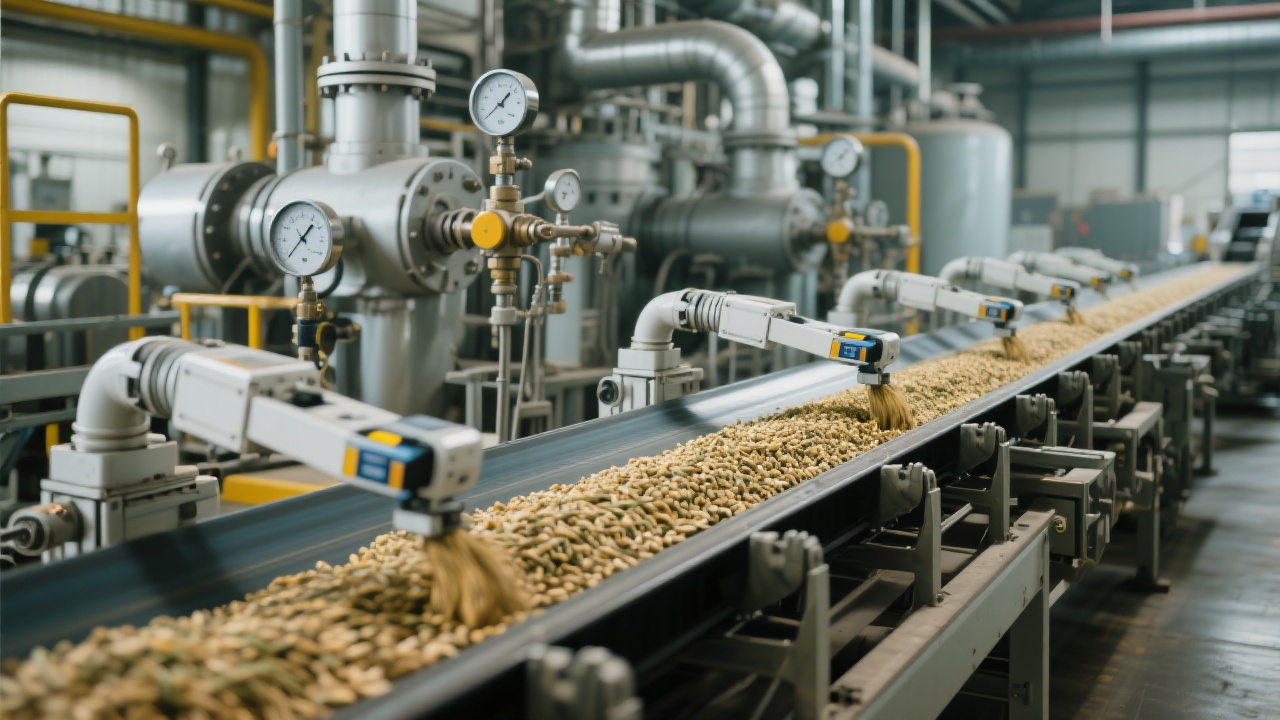Solvent Extraction Process Optimization and Troubleshooting in Edible Oil Processing
27 08,2025
Industry Research
This article delves into the core principles of solvent extraction technology in the edible oil industry, emphasizing its superior efficiency compared to traditional pressing methods. By analyzing solvent penetration, molecular diffusion, and convective mass transfer mechanisms, it demonstrates how this method enhances oil yield from raw materials such as soybeans and sunflower seeds. Practical case studies illustrate key parameter optimizations—including extraction temperature, solvent-to-feed ratio, and residence time—and provide actionable insights from field engineers on process tuning, residue control, equipment maintenance, and fouling prevention. Environmental compliance strategies aligned with global standards are also discussed to ensure sustainable operations. Supported by data-driven examples, flowcharts, and process diagrams, this guide offers technical professionals a clear roadmap for optimizing solvent extraction systems in real-world settings.

Mastering Solvent Extraction in Oil Processing: Practical Tips and Troubleshooting
For decades, solvent extraction has emerged as the gold standard in modern oilseed processing—especially for high-volume operations involving soybeans, sunflower seeds, and rapeseed. Unlike traditional pressing methods that typically recover only 70–80% of oil, properly optimized solvent systems can extract up to 95–98% of available lipids, significantly boosting yield and economic efficiency.
How Solvent Extraction Works: The Science Behind Efficiency
The core mechanism lies in three key physical processes:
- Permeation: Solvent molecules penetrate seed cells through capillary action (typically using hexane at 40–60°C).
- Molecular diffusion: Oil migrates from the solid matrix into the liquid phase due to concentration gradients.
- Convective mass transfer: Continuous solvent flow ensures dynamic equilibrium, minimizing residual oil in meal.
A real-world case study from a mid-sized soybean processor in Brazil showed a 12% increase in oil recovery after adjusting solvent-to-seed ratio from 3:1 to 3.5:1—a change that also reduced solvent consumption by 8% per ton of feedstock.
| Parameter |
Optimal Range |
Impact on Yield |
| Extraction Temp (°C) |
45–60 |
↑ 0.5–1.2% per 5°C rise (up to 60°C) |
| Solvent Ratio (L/kg Seed) |
3.0–3.5 |
Maximizes extraction without waste |
| Residence Time (min) |
60–90 |
Critical for full saturation |
Common Operational Challenges & Real-World Fixes
Even with precise parameters, operators often face issues like elevated solvent residue (>200 ppm), inconsistent throughput, or unexpected equipment wear. Here’s how experienced engineers tackle them:
- Solvent Residue Control: Use vacuum stripping at 70–80°C post-extraction; maintain a minimum of 3 passes through the desolventizer to reduce hexane levels below EU-regulated 100 ppm.
- Equipment Maintenance: Clean extractor baskets weekly using hot water + mild alkali (NaOH 0.5%) to prevent fatty acid buildup—reducing downtime by ~30% in one North American facility.
- Process Stability: Monitor moisture content (<5%) in raw seeds—high moisture causes poor solvent penetration and increases energy use by up to 15%.
These practices align with ISO 22000 and HACCP standards, ensuring both product safety and regulatory compliance across EU, US, and Middle East markets.
Whether you're scaling production or optimizing an existing line, understanding these fundamentals isn't just technical—it's strategic. By focusing on data-driven adjustments and proactive maintenance, processors not only improve yields but also build trust with buyers demanding consistent quality and sustainable practices.
Ready to unlock higher efficiency in your oil extraction process?
Get Your Free Process Optimization Checklist Now





